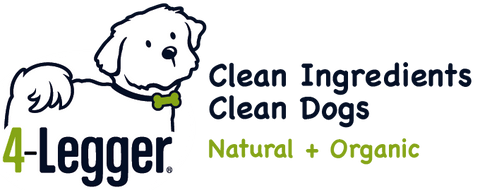How Safe are Scented Candles and Air Fresheners Around Your Pets?
This past week we went to a local veterinary clinic. Upon opening the door to the clinic we were blasted with the scent of ...
not what you think ...
scented candles!
Shockingly (at least to us), 7 out of 10 households still burn scented candles for aromatherapy, to make a room or house feel more cozy, or like the veterinary clinic, to mask odors, while supporting a $3.2 billion dollar industry.
Most Candles and Air Fresheners are Full of Synthetic Fragrances
The majority of candles are still made from paraffin, a wax made from petroleum. When burned, the paraffin is thought to release carcinogenic soot which can aggravate a number of respiratory issues like asthma, as well as heart issues.
Candles get their scent from artificial fragrances.
A scientist at the 240th National Meeting of the American Chemical Society (ACS) reported that scented candles have "anywhere from 800 to 1,500 chemicals, all with their own unique profiles and characteristics" depending on the complexity of the scent.
Air fresheners (including plug-in air fresheners) contain the same types of chemicals found in scented candles and pose the same safety concerns.
While the candle industry would say there is no definitive study that links candles directly to disease - common sense suggests otherwise. It’s a little like the fast food industry, or kibble makers claiming there is no direct link between inexpensive food (low quality) and resulting health issues.
These 1:1 correlations are difficult to reproduce for scientific studies - unless you happen to live in a Petri dish, and this is exactly what those industries are counting on!
There is however, very strong evidence to support the statement that these artificial fragrances and petroleum based candles are making us and our pets sick. One of the reasons is from the release of pthalates.
A 2013 article in the journal Environmental Health Perspectives shows a strong (though not totally definitive) link between exposure to phthalates (chemicals that are found in air fresheners, candles and plastics) during pregnancy and the child's future risk of asthma.
Pthalates have been shown to disrupt the endocrine system causing everything from birth defects to diabetes and cancer. They are ranked in the Top 12 of the "Dirty Dozen" for hormone disruption by the Environmental Watch Group (EWG).
While less prevalent, approximately 30% of low cost candles imported into the United States may have wicks that have a wire (lead containing) core instead of a 100% cotton or paper wick (as required when being manufactured in the United States).
“A candle with a lead-core wick releases five times the amount of lead considered hazardous for children and exceeds EPA pollution standards for outdoor air, says the CPSC, which is why they banned lead wicks in 2003. Exposure to high amounts of lead has been linked to hormone disruption, behavioral problems, learning disabilities, and numerous health problems.” (Source)
Soy, bluecorn and beeswax candles are safer so long as they do not contain artificial fragrances. Note: You will likely want to verify that the soy and bluecorn used as the source for the candle is non-GMO.
It’s important to understand that even your new soy, bluecorn or beeswax candle may be great for a romantic candlelit dinner but it may not provide any actual aromatherapy benefits or dispel odors.
The solution?
Diffusing pet safe essential oils!

CAUTION! There are VAST differences in the quality of essential oils!
The fact is, many of the essential oils for dogs on the market should NOT be used around your dog, cat, rabbit, gerbil, etc. (or you) and unless you want to become an expert and analyze every oil before purchase you need a reliable source for pet safe essential oil blends that are safe, non-toxic, and trusted.
At 4-Legger, we considered making our own essential oil blends so we would know without a shadow of a doubt that we could trust the quality of the oils.
But realizing the amount of time it takes to evaluate every lot of essential oils, and the vast array and combinations of essential oil blends, we asked Dr. Melissa Shelton DVM - owner of animalEO, and widely regarded as the world’s expert on the therapeutic use of essential oils in veterinary practice, if we could sell her essential oil blends on www.4-Legger.com.
We had been using NeuroBalance™ and Open Air™ with one of our dogs and we knew the quality was excellent. We felt confident using it on ourselves and our own dogs because we knew the extensive analysis Dr. Shelton completed on every essential oil she chose prior to deeming it safe for use around animals.
Dr. Shelton had purchased 4-Legger shampoo in the past. She was familiar with us and once she got to know us, she agreed! We were over the moon!
4-Legger is very proud to introduce you to the animalEO essential oil blends now available on www.4-Legger.com! These essential oil blends can be safely used for you, your human and your fur family!
They are excellent for both aromatherapy and to provide therapeutic support for your furry family.

We've provided information on all of the blends and will be doing a newsletter on each dog safe essential oil blend to introduce how they should be used (diffusion, spray, petting), and how you can incorporate them into your 4-Legger's bath (safe for dogs, cats, rabbits, gerbils, etc.)!
We invite you to learn more about the essential oil blends here, and let us know if you have any questions!






